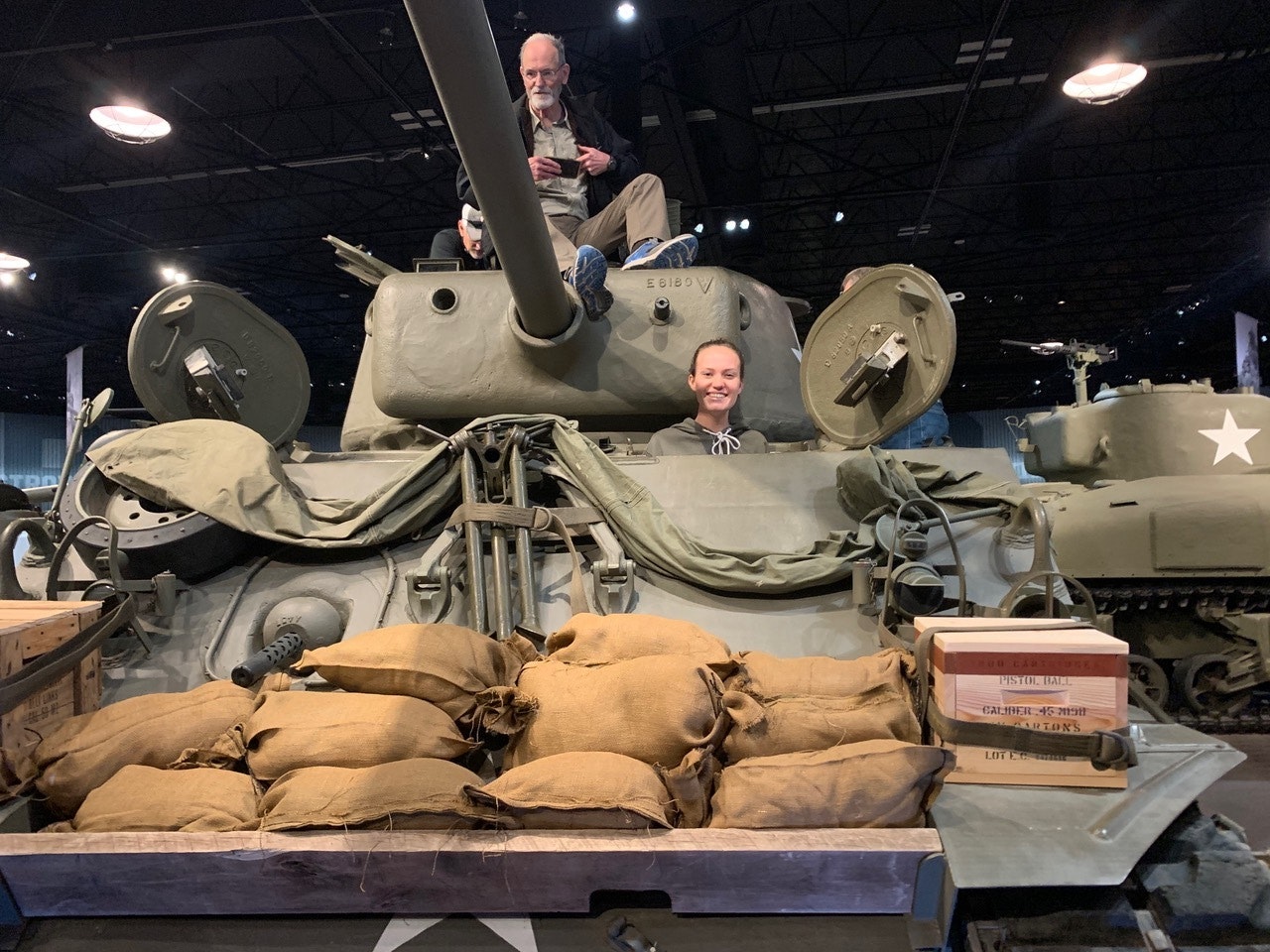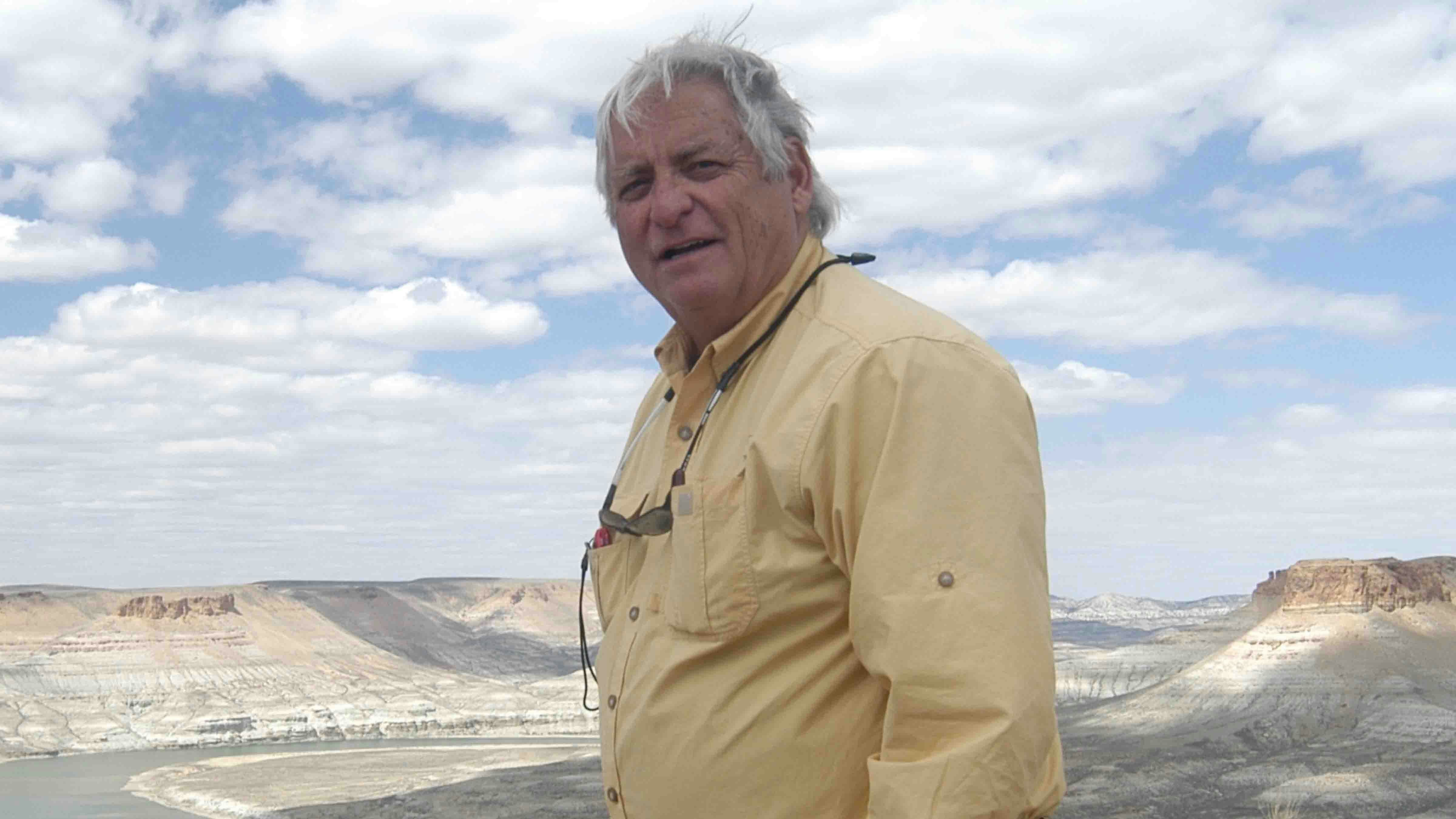By Bill Sniffin, publisher emeritus
Wyoming’s foremost military historian will host the grand opening of his massive 140,000 square foot military museum south of Dubois Saturday – but he can’t help thinking of the Russia invasion of Ukraine.
Dan Starks is proud of his new museum which might be the best museum in the world in detailing how World War II was won and how the Korean and Vietnam Wars were fought.
A crowd of 5,000 is expected for the grand opening of the National Museum of Military Vehicles. Admission is free on this day.
Perhaps the main message expressed at his museum is how American manufacturing ultimately made it impossible for any other country to triumph over the USA during World War II.
And yet his mind goes back to the war in Ukraine.
“Today when we look at that history of 75 years ago – of course, we should have intervened back then. Too bad we waited too long. Eventually that war took over everything,” he said.
“And now it’s another thing to have the exact same thing happening right in front of our faces,” he said. “It is instructive to remind people today that everything seems so difficult to find the best policy in the face of Putin. Well, just imagine the exact same question back then with Japan and Hitler?”
A huge focus of his museum is how American manufacturing was our secret weapon in winning World War II. Now Starks worries that we have lost that edge. He said he has heard that we are sending 7,000 of our 21,000 supply of Stinger missiles to Ukraine. “We have no way to build any more of them. These were built in 2002.”
But this Saturday all eyes will be focused on the museum. Starks says there will be tank rides, a shooting gallery with really big guns, some ceremonial events, a Black Hawk helicopter, five food trucks plus Gov. Mark Gordon and the first lady Jennie.

The museum hosts the largest private collection of military vehicles in the world. Starks and his wife Cynthia have been collecting these for years. The way the equipment is displayed tells the amazing stories about World II and the Korean and Vietnam Wars, too.
Because of expected sizeable crowds at its grand opening this coming Saturday, the museum staff is asking attendees to consider using a shuttle bus public transportation option to and from the town of Dubois. The Wind River Transit Authority offers the free service.
Guests are encouraged to use shuttle buses that will run every 10 to 20 minutes throughout the day, beginning at 9 a.m. The shuttle buses will help ease expected overflow parking pressure at the Museum.
Pickup/drop-off points include the Dubois Town Park at 909 W Ramshorn, the parking lot next to the Country “Jackalope” Store at 404 W Ramshorn and the parking lot near the Dubois Medical Clinic at 5547 US Highway 26 on the east side of Dubois.
Depending on where guests board the bus, the free ride to the Museum will take between 10 to 25 minutes. More information is available at: nmmv.org/grand.

When it was first announced, the National Museum of Military Vehicles was viewed as one of Wyoming’s next great museums. Now that it is open, it is obviously much more than that. It is one of America’s great museums.
The $100 million museum had to postpone its grand opening because of the worldwide COVID-19 pandemic. Founders Dan and Cynthia Starks have self-funded the project entirely on their own.
They are passionate about how the United States won World War II. During one of the rare tours that he presents, Dan starts off his narrative by describing the state of the American military at the start of the war.
“We just lost most of our ships in Pearl Harbor,” he says. “Our Pacific army was in the Philippines. Pretty soon, the Japanese bombed the heck out of them and forced them into surrender. We lost 75,000 of our finest young men,” he said.
“Across the other ocean in North Africa, we joined the British in an attempt to attack the German General Rommel. He routed us. He captured 183 American tanks and just destroyed our expeditionary force. We retreated over 50 miles to get away from the Germans, leaving all our equipment behind. It was a disaster.”
But from that lowly beginning, Starks said, America figured out a game plan to defeat enemies at two fronts, the Germans in Europe and the Japanese in the Pacific. How they did it is described in great detail in his new museum.

Starks has huge murals detailing how America used its vast manufacturing capability to gradually provide enough tanks, trucks, airplanes, and other items to keep a 12 million-member Army supplied. Plus, the USA was supplying other countries like Russia, Britain, and Australia. Examples of all this is on display at the museum.
Starks owns the world’s largest private collection of military vehicles. They are all pristine and restored to where they could be started and driven away. More than 500 tanks, trucks, jeeps, landing craft, and other vehicles are on display. It is an amazing exhibit.
Starks, 67, who is not a veteran, has such a high degree of respect for those who served that he sees this project as his life work. And what a life it has been.
He worked 32 years at a medical equipment company in Minneapolis and was CEO before retiring in 2017. The company was doing $6 billion in revenue per year. He had 28,000 employees working on life-saving devices for the human body, with a specialty on heart catheters and other devices.
“At one time, we figured our devices were saving a life every 3 seconds around the world,” he says. His company was acquired by Abbott Laboratories in 2017.
Dan and Cynthia’s life dream was to settle in Dubois and launch some project to recognize the service of America’s veterans.
And boy, is this ever some project.
Using Richardson Construction of Cheyenne as a general contractor, the project finished this year on schedule. Despite the gigantic size of the facility, (you can almost put three football fields inside its walls), Starks says it might be too small.
The Starks’ daughter Alynne is the executive director of the facility.
Dan sees the facility having three components:
First, to honor the service and sacrifice of millions of Americans.
Second, preserve the history of what happened during these wars.
Third, provide an educational experience.

The vast array of vehicles goes beyond the killing machines of tanks, artillery, and flamethrowers. It also includes dozens of the machines that made the wars winnable.
Starks likes to discuss how a gigantic supply chain operation called the Red Ball Express helped secure the victories. This was the supply chain that seemed to provide endless amounts of food, ammo, and war machines as Allied troops marched toward victory.
He wanted to show how America was able to convert its massive manufacturing expertise to enable the Allies to fight two different wars in different parts of the world and win both in just three and a half years.
The new museum shows how the American ability to mass-produce cars and trucks was converted to produce tanks, jeeps, airplanes, and other war machines in record amounts that just wore down the enemy.
“Germany built beautiful machines, but they did not understand mass production like Americans did. It was impossible for them to keep up when it came to replacing and resupplying their troops at key moments in World War II. We want to honor everyone who participated in this great victory. This museum showcases that effort by showing the machines that were built and how they were utilized,” he said.
Near the middle of the building’s interior is an amazing vault, unlike anything west of the Smithsonian. It holds his $10 million collection of historical weapons, including a rifle fired at Custer’s Last Stand and a pistol used by General Pershing in World War I. The collection includes 270 Winchester rifles. The vault has a safe door that would look just right at the national mint. Key item is the authenticated rifle that fired the first shot for the Americans in the Revolutionary War at Bunker Hill in Boston.
It has various meeting rooms and the Chance Phelps Theatre, named for the brave Dubois Marine who died April 9, 2004, in Iraq. The movie Taking Chance was about that soldier.

There is large library with one of the world’s largest collections of manuals and other information about military vehicles. More information can be found at NMMV.org. All military veterans and active duty receive free admission. The museum is located eight miles south of Dubois on Highway 287/26.
Their plan for the museum has gone far beyond just a place to display vehicles.
“We have displays that show the landing at Normandy, the surrenders in Germany and Japan, the Battle of the Bulge, and other great moments in our country’s military history,” Stark said.
Besides the main museum facility, the Starks built a large building just off Main Street in Dubois to hold many of their vehicles and to be a shop to keep them running. Cynthia has also built a bowling alley, arcade, and bakery in downtown Dubois.
“We love Wyoming. This is our great adventure,” Starks concluded.





